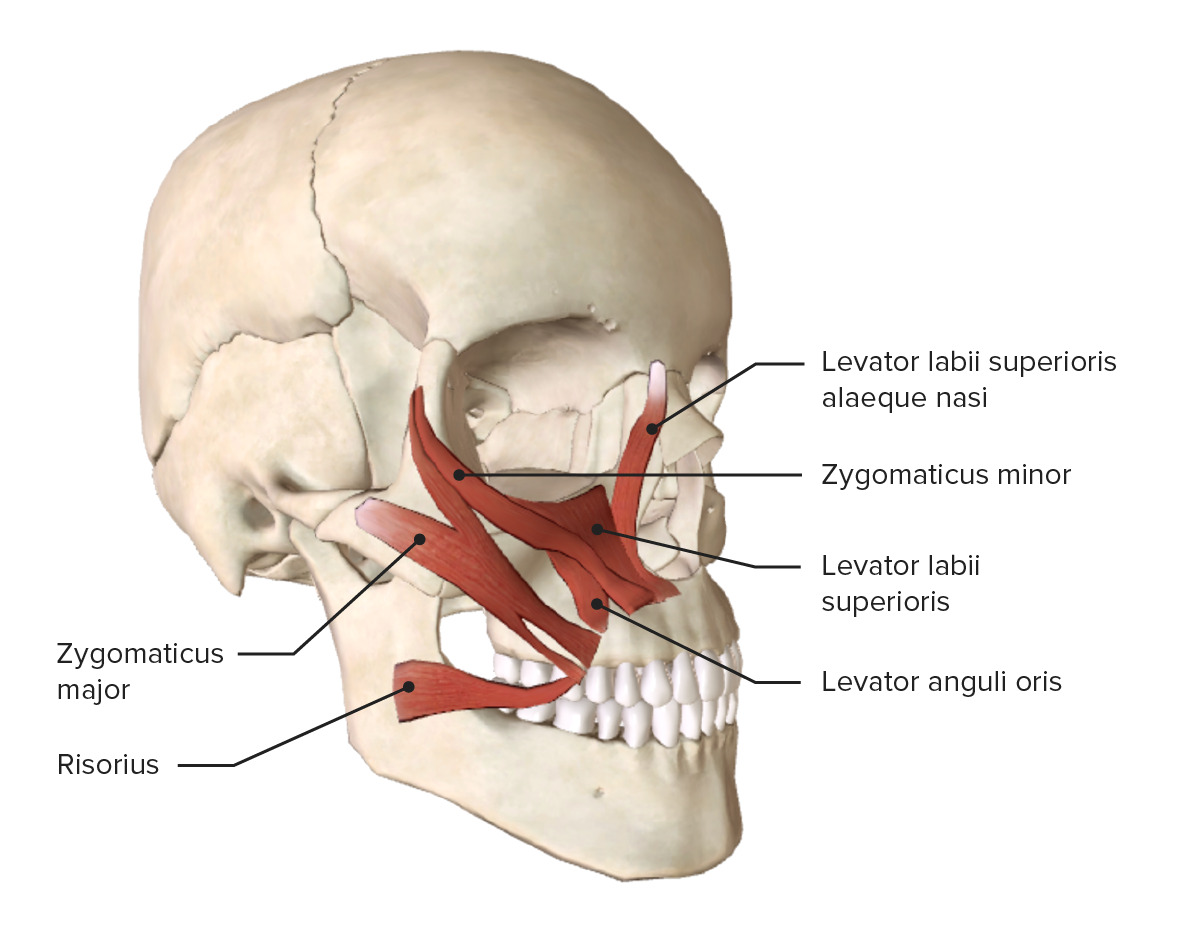Playlist
Show Playlist
Hide Playlist
Epicranial Group – Facial Muscles
-
Slides Anatomy Muscles of the Face.pdf
-
Download Lecture Overview
00:01 All right. Our first muscle of facial expression is that of the occipitofrontalis. 00:09 This is actually a muscle that's comprised of two bellies. 00:13 The first belly here that we'll focus on is the frontal belly that you see highlighted in red. 00:19 And anytime we think about muscles, we have to think about their origin, their insertion, their innervation, and their action. 00:27 And the great thing about muscles of facial expression is that the facial nerve will be the nerve that innervates them. 00:35 But of course, the facial nerve has branches, and we'll highlight the specific branches that do innervate the muscles of facial expression. 00:45 First, is the origin of the frontal belly. 00:48 And that origin is from the epicranial aponeurosis. 00:52 The muscle... -- then we'll insert on the skin in the subcutaneous tissue of the eyebrows and the forehead. 01:02 It's specific facial nerve innervation is via the temporal branch. 01:08 And then lastly, the action of the frontal belly is to elevate the eyebrows and wrinkle of the skin of the forehead. 01:20 And this will produce a surprised look. 01:26 The occipital belly is shown and highlighted in red right in through here. 01:32 It works in conjunction with the frontal belly. 01:37 Its origin is the superior nuchal line of the skull. 01:43 It to have an attachment to the epicranial aponeurosis, and in this case, that is the insertion rather than the origin. 01:53 Its innervation specifically is the posterior auricular branch of the facial nerve. 02:01 And then lastly, the action of this muscle is to retract the scalp and this will increase the action of the frontal belly. 02:12 So it's synergistic. 02:14 Now, misspoke there. 02:16 This is really the last set of muscles of facial expression. 02:21 But really, what you're gonna see here these are really have no functional consequences in humans. 02:26 So the platysmal, in reality, is the last muscle facial expression of consequence. 02:32 So when we have these last set of muscles, the auricularis muscles, we have three sets of them. 02:40 There's the auricularis anterior as shown here. 02:44 We also have the auricularis superioris, that is shown right in through here, the middle of the three. 02:51 And then the last auricularis muscle is the posterior auricularis muscle. 02:57 And again, essentially nonfunctional in humans.
About the Lecture
The lecture Epicranial Group – Facial Muscles by Craig Canby, PhD is from the course Head and Neck Anatomy with Dr. Canby.
Included Quiz Questions
With respect to the frontal belly of the occipitofrontalis muscle, which statement is most accurate?
- It is innervated by the temporal branch of the facial nerve.
- It plays no role in facial expression.
- It is primarily responsible for ear movement.
- It inserts onto the maxilla.
- It originates from the temporal bone.
Customer reviews
5,0 of 5 stars
| 5 Stars |
|
5 |
| 4 Stars |
|
0 |
| 3 Stars |
|
0 |
| 2 Stars |
|
0 |
| 1 Star |
|
0 |




